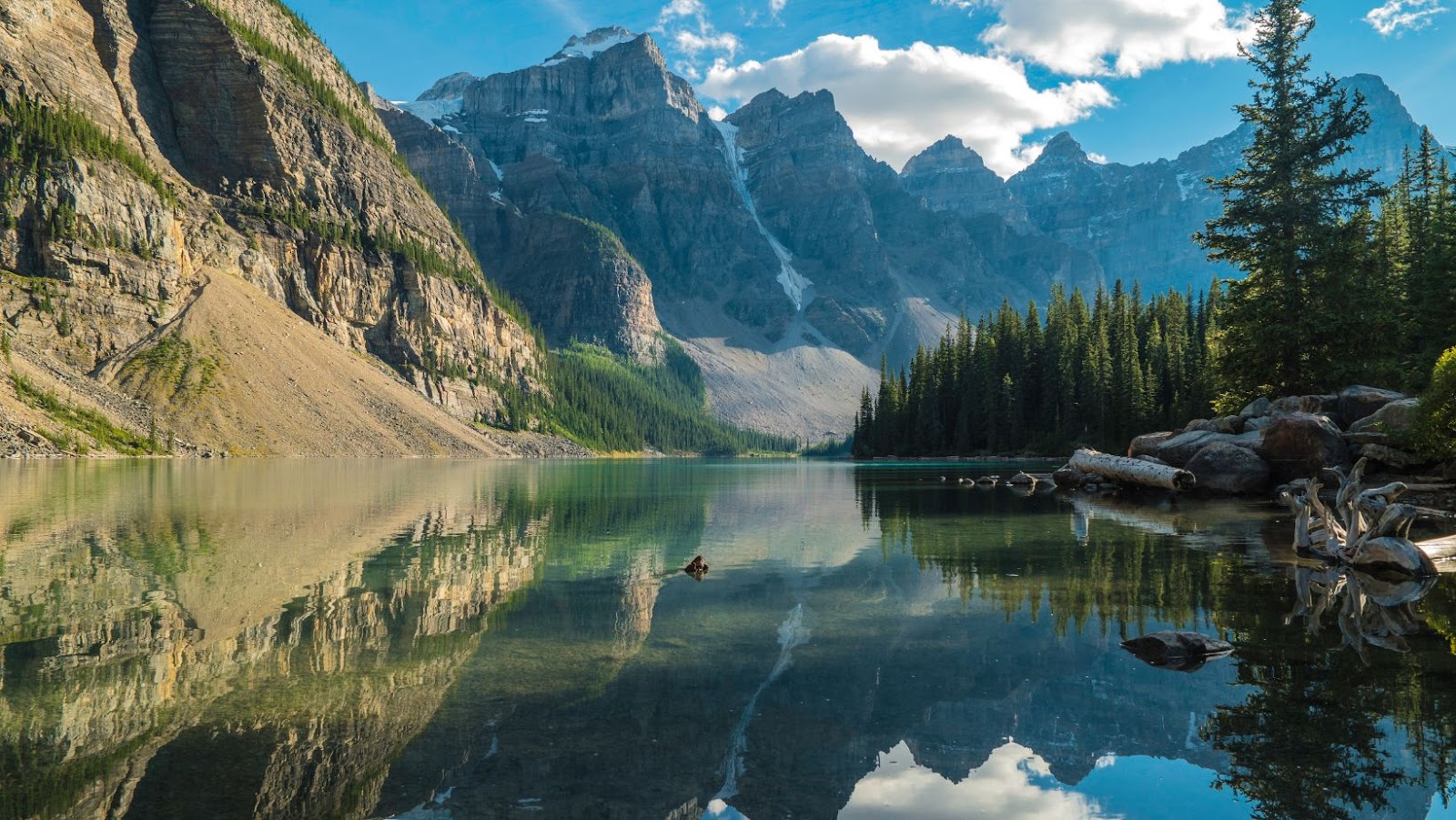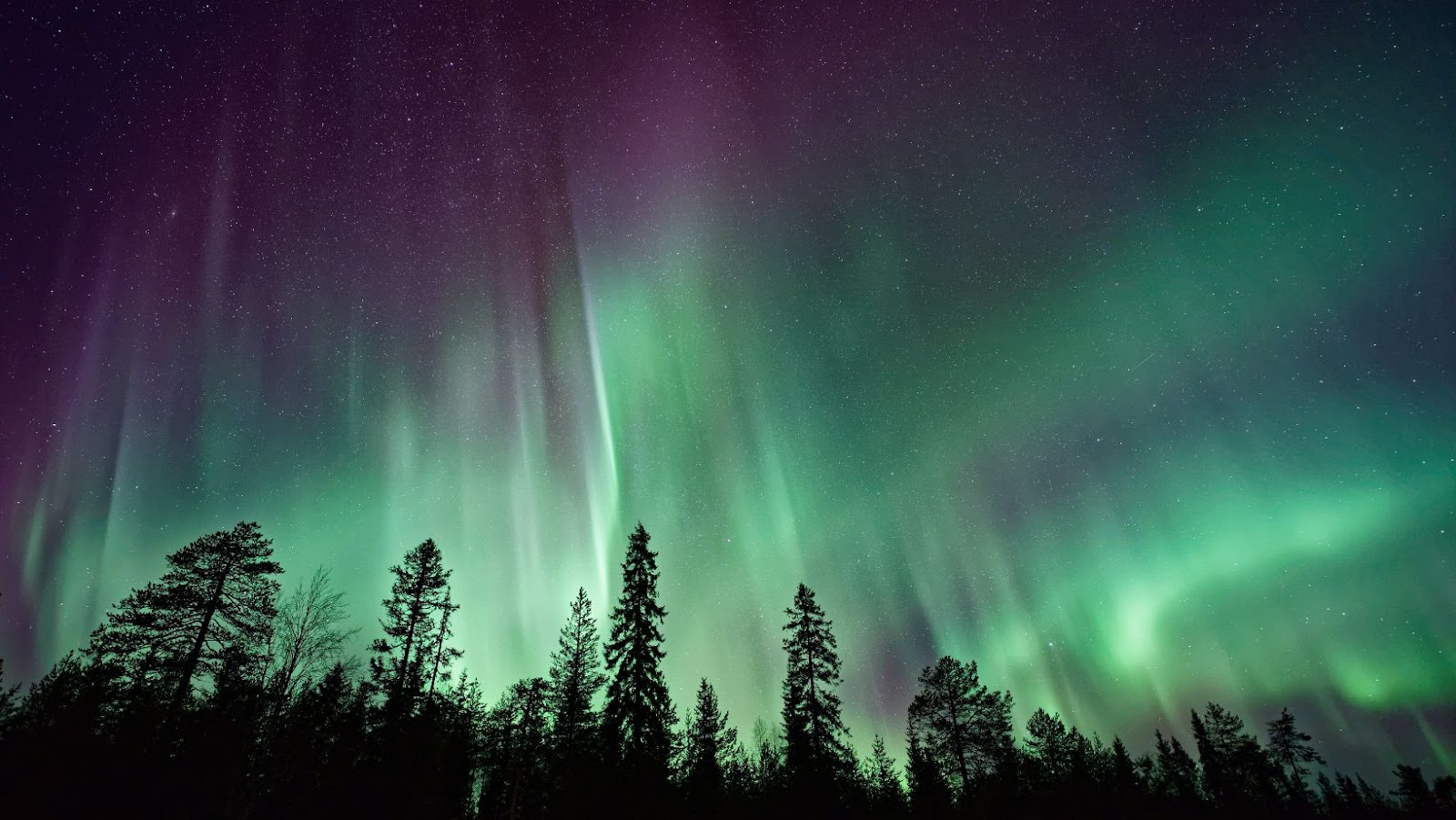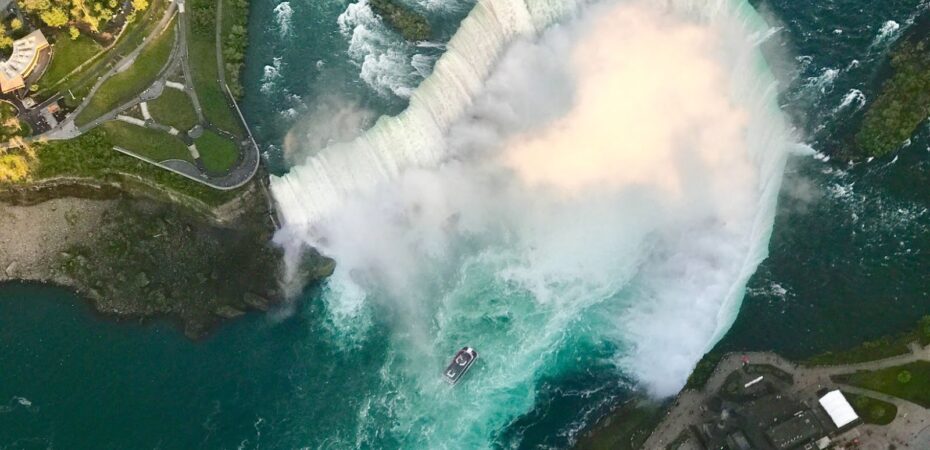When bucket-list destinations for nature enthusiasts are being listed, trust that Canada is clinching numerous spots on that list. From the beautiful and impressive Niagara Falls to the archaeologically-wealthy Dinosaur Provincial Park to the epic global dazzle that is the Northern Lights, Canada does not have a dearth of them as they are dotted all around its large expanse. Owing to our inability to name them all, below are 5 natural wonders to experience there.
1. Niagara Falls, Ontario
This magnificent waterfall is among the largest in the world. It is also one of the most popular vacation spots in Canada for honeymooners. It’s interesting that you can view this waterfall in all three forms of matter. The natural wonder freezes magnificently during the winter, billows mist up into the air during the autumn, and assumes its usual free-flowing state in other seasons. From Toronto, Niagara Falls can be reached in roughly one and a half hours. Visitors can reach Toronto by plane or on the Montreal to Toronto train.
On the US side of the border is where two of the three Niagara Falls are found. Best viewed from the Canadian side, the trio creates a gigantic U-shape that releases 3160 tons of water per second into the Niagara Gorge. A Maid of the Mist boat cruise, tunnels behind the Journey Behind the Falls cascades, or an all-encompassing view from the Skylon Tower observation platform are all-encompassing options for viewing the Niagara Falls.

2. Lake Louise, Alberta
Lake Louise is a picturesque lake located in the mountains of Banff National Park. Up to four million people visit Banff National Park each year because of its wildlife abundance, cool montane climate, gorgeous lakes, and dashing jagged peaks. The most famous of the ridiculously gorgeous lakes in Banff National Park is Lake Louise. The smaller, loftier Moraine Lake, a brilliant turquoise lake encircled by steep, tall peaks, is a secondary attraction to Lake Louise. Despite its beauty and its similarity to other lakes in the Canadian Rockies, Lake Louise’s temperature rarely rises above 41 degrees Fahrenheit, making it unsuitable for swimming. The glacial Lake Louise is one of the most photographed places in the world. Its stunning glass reflections of the surrounding forests and high mountains, as well as its cold, alluring blue color, are its trademark. Tourists can hike and ride mountain bikes and horseback on trails surrounding Lake Louise.
3. Dinosaur Provincial Park, Calgary
The Dinosaur Provincial Park, one of the most fascinating Calgary attractions for kids and families, is situated in the heart of Alberta’s Badlands and is home to some of the most significant fossil finds. There are around 44 species, 34 genera, and 10 families of dinosaurs in the park, which date back between 75 and 77 million years. As a UNESCO World Heritage Site, this park is highly valued in terms of aesthetics. From tiny fern spores to enormous carnivorous dinosaurs, more than 500 species of life have been taken from the site and are now on exhibit in museums all over the world. In Dinosaur Provincial Park, laypeople without any paleontology training can search for Jurassic remnants.

4. Northern Lights, Yukon
Picture the night sky filled with rivers of light of various colors—red, purple, blue, green, and yellow—as they glow, swirl, and dance. This is what the Northern Lights in Yukon look like. When electrically-charged particles from the sun clash with gasses as they enter our atmosphere, these lights are released throughout the sky, creating this beautiful display. This occurrence takes place in the aurora oval, a massive ring located above the geomagnetic north pole of the planet. Because Canada lies beneath the aurora oval, Yukon provides an excellent opportunity to witness this natural wonder.
The Northern Lights are not exclusive to Yukon or even Canada. Although you can see them elsewhere in some other cities or countries, Yukon’s high latitude and dearth of light pollution make it more likely that you will see them there. The city also has a large number of viewing locations where visitors and tourists can camp out and comfortably watch the night sky.
5. Great Bear Rainforest, British Columbia
This forest, which covers roughly 6.4 million hectares, is a national asset and a natural wonder. It is the largest and most complete coastal temperate rainforest in the world. Adventurers who want to experience breathtaking landscapes, waterways, and an abundance of wildlife frequently travel to the Great Bear Rainforest. This woodland has bear sightings, and the streams are teeming with salmon. Nearly the majority of the Kermode bears, also known as Spirit bears, reside in this jungle. The First Nations people have lived in and preserved the Great Bear Rainforest for millennia. To guarantee the preservation and sustainable management of the forest, agreements have been struck and made between the indigenous people and the Canadian state.
Canada is the second largest country in the world. On top of that, large areas of land are inhabited to allow wildlife and natural habitats to coexist and thrive. There is an abundance of natural wonders awaiting you in this gorgeous country. Do explore more than what is available on this list when you get there on vacation!


 By
By 




